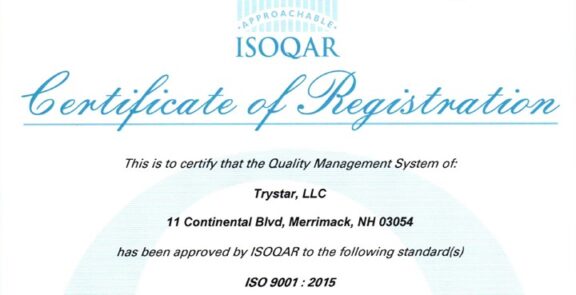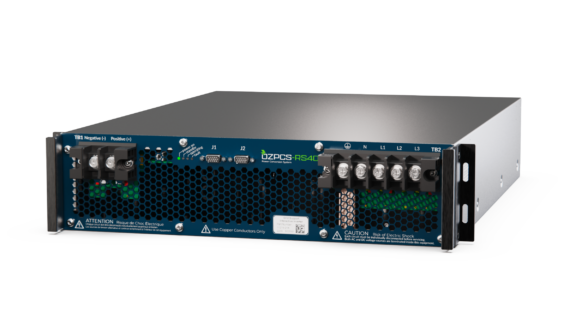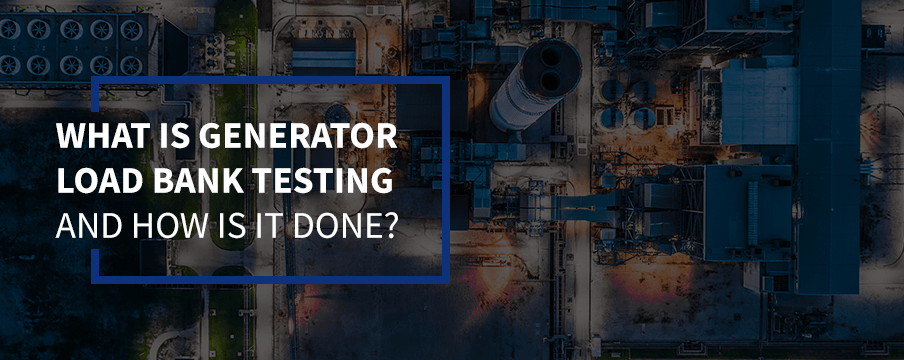
If you own or operate a generator, you must understand the importance of load bank testing to ensure the performance of your power supply. Using a load bank enables you to see how well your generator performs under typical operating conditions. Without regular testing, you won’t know if your generator will be ready the next time you need it for backup power. Find out more about testing a generator using a load bank to get the most from your power supply.
What Is a Generator Load Bank Test?
A load bank generator test puts a generator under varying load conditions and sees how the machine reacts to the power draw. While you can use other means of testing generators, load banks offer the most accurate means of testing the power equipment. If you have to check multiple generators or need regular, reliable tests, using a load bank will ensure you get accurate results. You can easily adjust the power draw on the generator through the controls on a load bank, something that becomes difficult if you try alternative methods of creating a power draw.
Don’t mistake the automatic exercising some generators do for a load test. These exercises turn on the device but do not put it under a load. Without testing the generator under load, you will not be able to gauge the health and performance capabilities of the generator.
How Do I Test My Generator?
The testing procedure starts with following the generator manufacturer’s operating recommendation, including checking all the fluid levels.
With the generator output breaker in the “off” position, you will need to connect the load bank to the generator using the appropriately sized power cables. This process can include connections to Am-Lok connectors on Portable and Trailer load banks or connections directly to the bus for other types.
To test the generator, you need to ensure that the load bank’s emergency stop button is not engaged so that the bank draws power.
Next, check that the voltage selector matches the generator’s output. Always test your equipment with an appropriately sized load bank. Do not apply a load higher than the generator-rated capacity.
Turn the control power switch on. Turn on the blower power for stationary models.
Then, turn on KW load switches until you reach the desired load. Then flip the master load switch on. During the test, you can change the draw by switching KW switches on or off.
The timing for the test depends on the type of generator you have and the application. Smaller generators often run under full load for up to three or four hours. Larger applications can operate for eight hour or more. For regular testing, though, you may only need to run the generator and load bank for 30 minutes, not counting the warm-up and cool-down time for the blower.
To shut down the system at the end of the test, you need to turn off the load switches, followed by the main power. Allow at least five minutes for the blower to continue operating to remove excess heat from the unit before turning it off.
Why Is Generator Load Bank Testing Done?
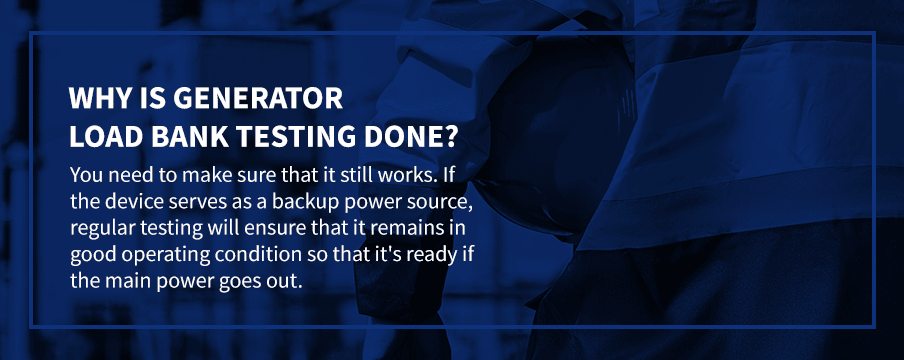
There are several reasons to test a generator. If the device serves as a backup power source, regular testing will ensure that it remains in good operating condition so that it’s ready if the main power goes out. Even regularly used generators may not create full power loads. Testing ensures that these machines can adequately reach these power levels.
Secondly, testing prevents wet stacking in diesel generators. This condition occurs when unburned fuel condenses with soot to create deposits in the exhaust system, reducing the efficiency of the entire system. Wet stacking gets its name from the dark condensate that comes out of the exhaust. Load bank testing can help completely burn the fuel in the engine, preventing this situation.
How Often Does a Generator Need Testing?
How frequently you need to test your generators depends on their use. For instance, federal requirements for backup generators for healthcare facilities indicate you must check the generator at full load for 30 minutes at least once a month.
Consider testing more often for lightly loaded generators, as this will help prevent wet stacking in these generators.
You may need longer testing for emergency power systems that supply electricity to live-preserving equipment. Frequently, these types of devices operate in hospitals or other healthcare facilities to power ventilators and other machinery that maintains patients’ vitals. Testing these emergency power supplies should include monthly half-hour-long tests, but they should also undergo tests that last up to four hours once every 36 months.
Benefits of Load Bank Testing
By using a load bank to test your generator, you enjoy multiple benefits for your generators as well as peace of mind. The main advantages of testing include increasing your ability to:
- Stay in compliance with testing for some applications, such as those used in hospitals
- Prevent wet stacking to extend the life of a diesel generator
- Ensure backup generators are ready for use at full power
- Verify the efficiency of generators that get regular use
- Identify poor operation of a generator
With regular load bank testing, you will know whether you need to make repairs of your generator or if it has a problem that prevents it from creating a full power load.
Find the Load Banks You Need for Testing Your Generator
Many companies purchase a load bank for their testing needs. This can be a portable or trailer type for use across multiple power sources or a permanently installed stationary or duct-mounted type. Renting is also an option, depending on the frequency of use. At LBD, we manufacture four basic types of load banks — portable, stationary, duct/roof-mounted and trailer. We also fabricate many custom solutions. With options to test a range of generator outputs, you’re sure to find the right load bank for your testing needs. For example, stationary and trailer based models have power ratings up to 3000 kW, and portable units can reach power ratings of 1000 kW.
If you’re ready to receive a quote, fill out our quote request form. Or, for more information about our load banks, contact us at Load Banks Direct.
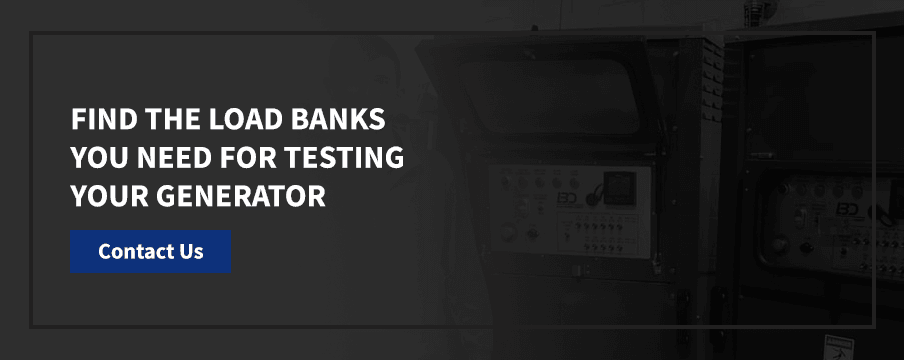
We Are Here
To Help
Our team is here to support you and solve your power challenges. Connect with our responsive experts today to learn about our customized power solutions and products.

